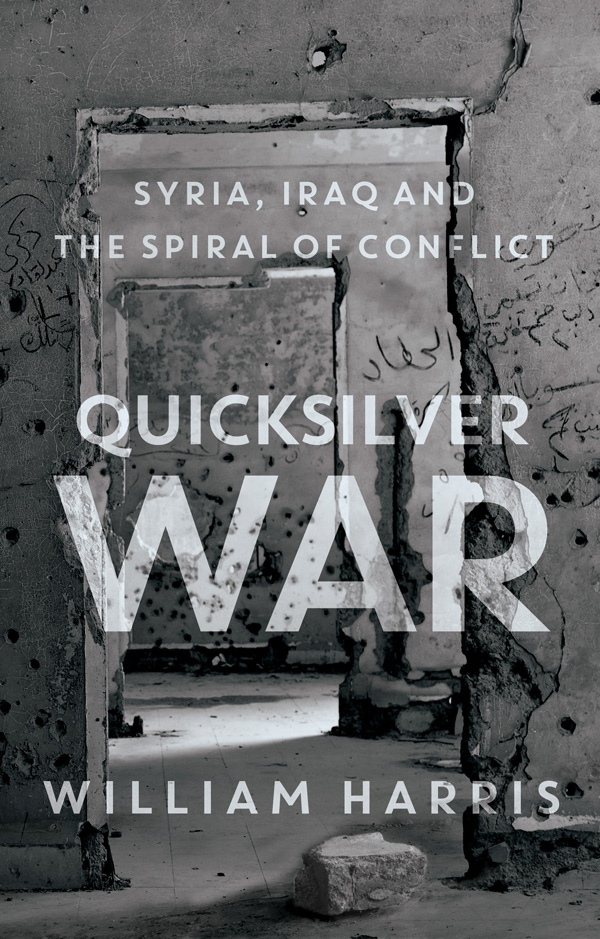|
Book Review by Miaad Hassan, PhD Candidate, University of Florida (May 15, 2020) William Harris’ Syria, Iraq, and the Spiral of Conflict: Quicksilver War is an ambitious work as befits a complex region. The author dissects the conflicts that plagued Syria and Iraq following the Arab Spring and opened a Pandora’s box of violence and civil strife. While the author provides meticulous dates and motives for the creation of the Islamic State of Iraq and the Levant (ISIL), a Sunni jihadist group and self-styled caliphate, there was nothing inevitable about its rise, even though echoes of its once far-reaching success in Syria reverberate throughout the Middle East today. Quicksilver War highlights the role of human agency in this tragedy, both malicious and well-intentioned, that encouraged outside interventions and gave momentum to ISIL before and after its early successes in Syria and Iraq. It describes the politically volatile Fertile Crescent, the cradle of civilization that embraces Iraq, Syria, Lebanon, Jordan, Palestine, and the northeast of Egypt’s Nile. Tellingly, Harris traces ISIL’s origins not necessarily to 2011 and the Syrian conflict but America’s catastrophic invasion of Iraq almost a decade earlier. If regime change in Iraq appeared to be an independent event, the author convincingly argues that its trajectory intersected with and resulted in the emergence of the Islamic State. Quicksilver War credits the caliphate with crystallizing popular abhorrence of Bashar al-Assad’s Syrian regime, a view shared by many Western powers, but notes that the caliphate quickly became ideologically more extreme and brutal than the regime it set out to overthrow. It helped to recast the Kurdish question in Syria, Iraq, Iran, and Turkey and encouraged a bout of navel-gazing by the major foreign powers, each of which jostled for influence in the Middle East at the expense of the people. Few countries came out of this affair with its reputation intact. The Kurds, caught between Iraq, Syria, and Turkey, “had no choice but to cling to the USA” (p.124). Syria had intervened in Iraq since 2003, the year Saddam was captured by the Americans and what remained of Iraq’s Ba’athist party lost hope of participating in Iraq’s future. The newly installed Shiite government, according to the author, once “patronized by Americans” and now “patronized by Iranians,” allied with the Alawite Syrian regime as its Iranian masters demanded. Harris makes clear that ISIL was the result of internal dissent within the Syrian regime, not of disaffected Iraqi Sunni, as many supposed, and that the Iraqi prime minister, Nuri al-Maliki, a Shia, supported the tottering Syrian regime financially, logistically, and by sending Shi’a militia to fight on its behalf. In response, ISIL spread to Iraq via Iraq’s Sunni insurgency, the atrocities culminating in the massacre of 1,700 captured Iraqi Shia air force cadets at Camp Speicher near Tikrit in 2014. The author maintains that ISIL originally grew as a proxy of international and local actors whose motives were as complex as their differing agendas. He gives an excellent account of the principal external actors (Iran, Turkey, and Russia), framing their respective interests as a nostalgic appetite for reviving old empires and influences. He calls the developments in foreign relations between Turkey, Syria, and Iraq “personal agency and synergy,” which repeatedly changed over time and space and explains the author’s choice for the book’s subtitle. For readers familiar with the history and politics of the region, Quicksilver War will be informative and interesting, but for those who are not familiar with the long history of the Fertile Crescent, home to the planet’s oldest civilizations, it will be a challenging read. There is little to criticize in Quicksilver War, except that the account is largely academic—not an unreasonable approach given the region’s volatility, but it fails to give voice to the people who were drawn, usually unwillingly, into the conflict and paid the price. The book might have benefited from a sociological approach to ISIL, which claimed to be and behaved as if it were the gatekeeper to Islam and the earthly embodiment of Islam’s religious identity. Quicksilver War ably shows that politics and wars in the Middle East are as mercurial as the element from which it draws its name, the only metallic element that is liquid at room temperature and whose vapor is unsafe to anyone in close proximity. |


 Syria, Iraq, and the Spiral of Conflict: Quicksilver War
Syria, Iraq, and the Spiral of Conflict: Quicksilver War